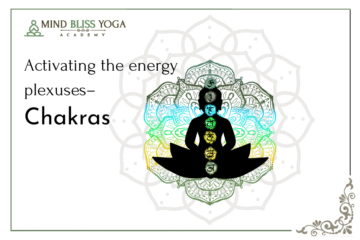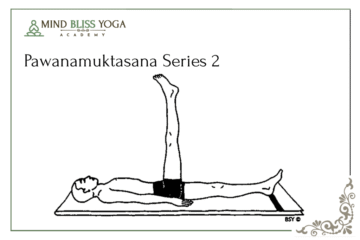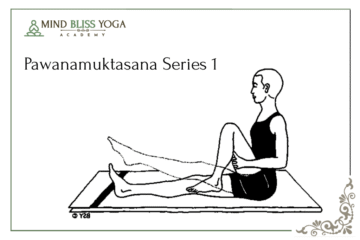This part of the Pawanmuktasana series 3 is really about shaking loose the tension that gets stuck inside the body. It works on those tight spots, especially along the spine, that build up without us realizing. The moves also help open up the chest so breathing feels easier and help keep everything in balance. This series is very beneficial for people with stiff backs and also for women with menstrual problems. It also helps tone the pelvic organs and muscles. This can also be used after pregnancy (postnatal) for re-toning flaccid muscles.
Most of these Shakti Bandha Series can be practiced safely if there are no major health issues. But if there’s a serious injury or condition, it’s always better to check first or avoid postures that could aggravate the issue.
Most right-handed people find it easier to practice these movements, as it feels natural. Once you get used to it, you can switch with the left, as doing both sides can help even things out—like your limbs, your nerves, and even the way your body responds and behaves.
Please see the link for Pawanmuktasana Series 1:
Pawanmuktasana Series 1
Pawanmuktasana Series 2
Asanas in PM3
Rajju Karshanasana (Pulling the Rope)

Gentle arm and shoulder movement that opens up the upper back. Also tones the chest. Good to begin with, especially to bring movement to the arms after long periods of stillness.
Gatyatmak Meru Vakrasana (Dynamic Spinal Twist)

This is a rhythmic spinal twist. It helps ease out stiffness from the back and brings flexibility to the spine. Best avoided by those with any back injury or pain.
Chakki Chalanasana (Churning the Mill)

A circular motion with the arms and upper body that works into the abdomen and pelvis. It’s helpful for menstrual health and gentle enough to be practiced during early pregnancy or after childbirth.
Nauka Sanchalanasana (Rowing the Boat)

This easy rowing motion really gets things going around the pelvis and belly. It gently activates the area, helps with digestion, and can often bring relief if there’s any sluggishness or constipation. It’s one of those movements that feels simple but does a lot inside. It can feel tiring, but it builds core strength over time.
Kashtha Takshanasana (Chopping Wood)

A strong, swinging movement that works into the shoulders, upper back, and pelvic area. This one often helps release emotional tension too. Not suitable for anyone with knee issues or sciatica.
Namaskarasana (Salutation Pose)

This one really works the thighs and hips. You’ll feel it in your upper body too. It also helps open up the pelvic region. It should be avoided if there’s pain or tightness in the knees.
Vayu Nishkasana (Wind Releasing Pose)

Stretches the whole spine and tones the digestive organs. It creates a nice space between the joints and improves circulation. Avoid if there’s high BP or spinal issues.
Kauva Chalasana (Crow Walking)

A squat-based walking movement that strengthens the legs and improves blood flow to the lower body. Helps prepare the legs for meditative sitting postures. Best avoided if knees or ankles are sensitive.
Udarakarshanasana (Abdominal Stretch Pose)

A twisting movement done in a squatting position. It gently compresses and stretches the abdominal organs and helps relieve constipation. Not recommended for knee pain or sciatica.
Conclusion
The Shakti Bandha Asanas may not look intense from the outside, but their internal impact is significant. These movements offer a way to clear stagnation, restore natural energy flow, and improve physical and emotional balance. Practiced consistently, they support vitality, inner awareness, and long-term joint and organ health without strain or force.
Learn to know more about pawanmuktasana part 3 you can visit best yoga school in rishikesh and join 200 hour yoga teacher training in rishikesh and yin yoga teacher training in rishiekesh




